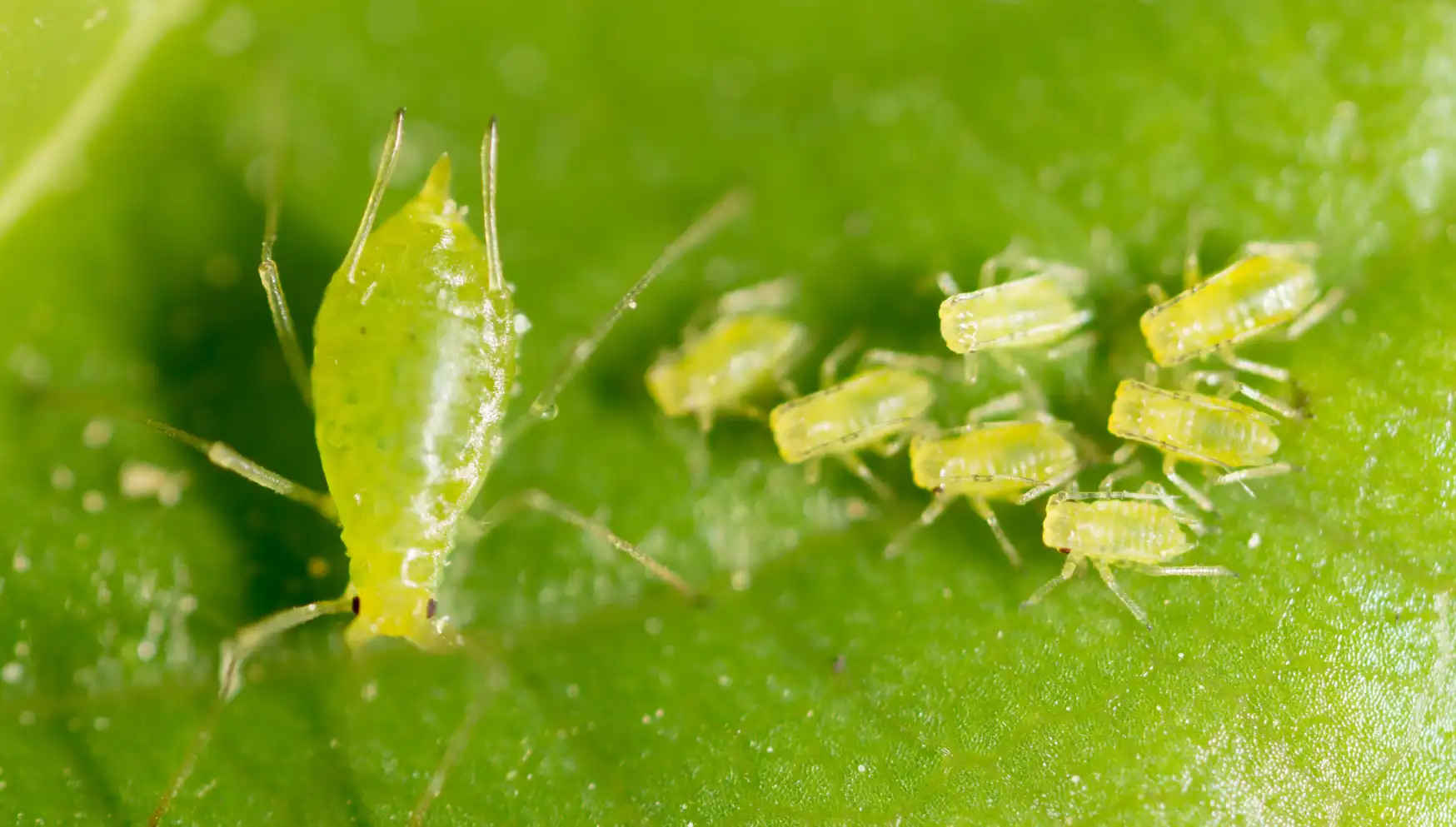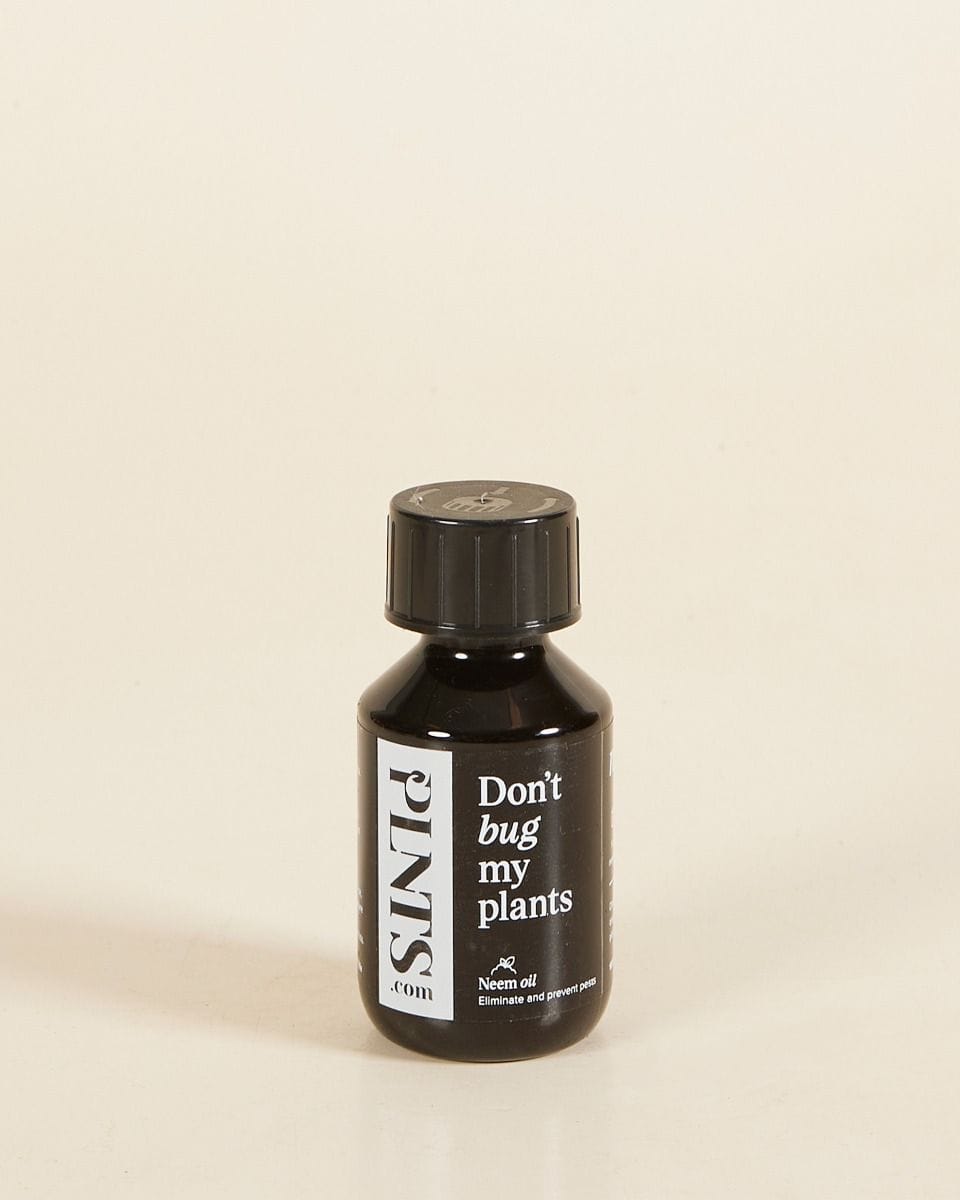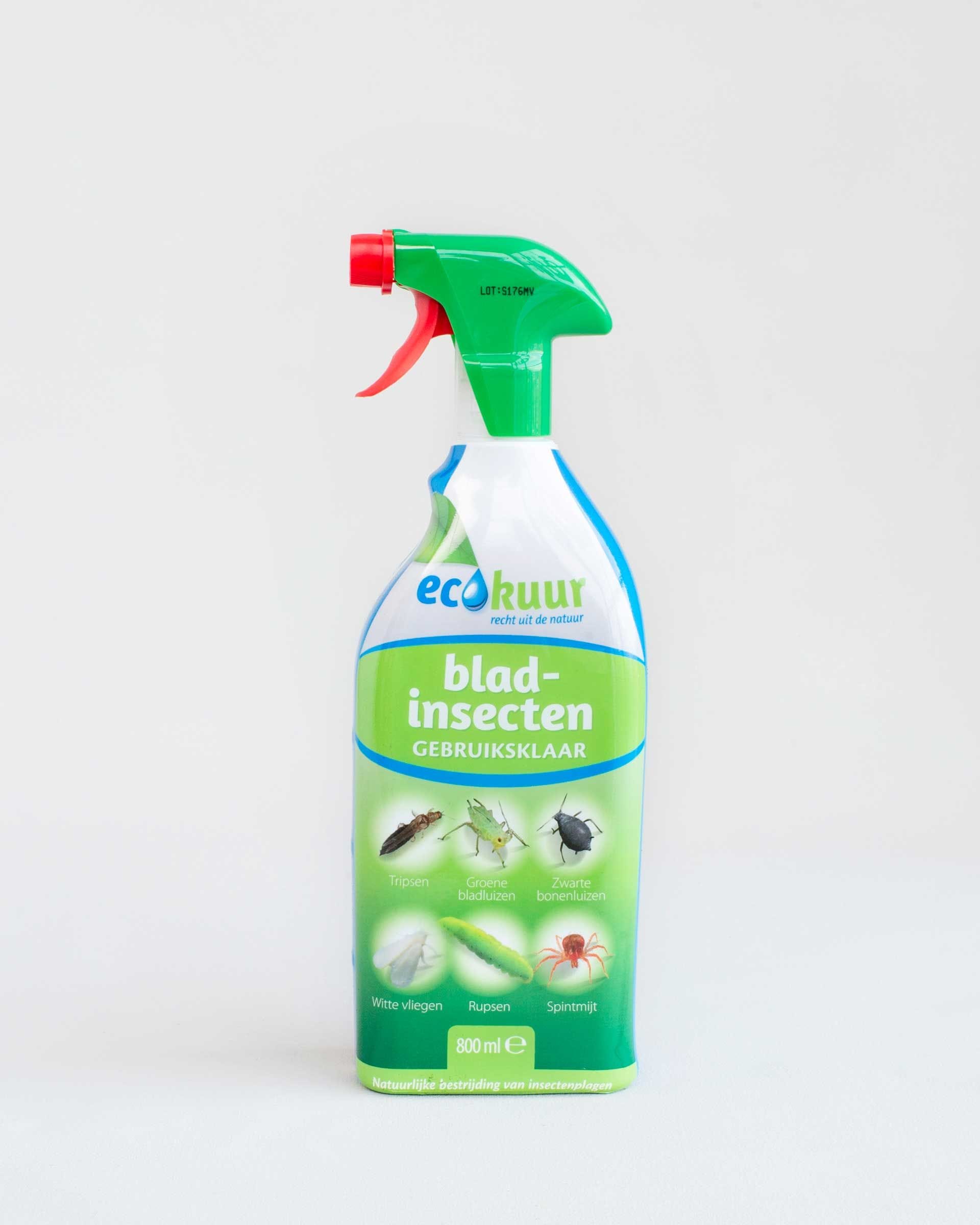Afidi
Hai notato all'improvviso dei piccoli insetti che strisciano sopra o sotto le foglie della tua pianta d'appartamento? È probabile che tu stia affrontando un'infestazione di afidi. Sono una vera seccatura, perché possono moltiplicarsi molto rapidamente e formare grandi colonie. Si nutrono del succo delle foglie della tua pianta, indebolendola. Meglio prevenire che curare, ma come puoi prevenire questi parassiti o, se è già troppo tardi, controllarli? Leggi qui cosa sono esattamente gli afidi e come combatterli al meglio.
Cosa sono gli afidi?
Gli afidi sono purtroppo un parassita comune nelle piante da interno. Un afide è un insetto erbivoro appartenente alla famiglia degli Aphidoidea. Sono molto piccoli, di solito non più grandi di mezzo centimetro. Gli afidi hanno un corpo a forma di mango e possono essere verdi, marroni o neri, ma anche gialli, rosa, bianchi o viola. Alcuni afidi hanno le ali. Amano annidarsi sui punti di crescita della pianta, come sotto le foglie in crescita, negli angoli delle foglie, sui giovani steli o nei boccioli. Questi posti offrono un sacco di cibo per gli afidi. Succhiano i nutrienti e i succhi della tua pianta attraverso il loro "trunk". Ogni volta che un afide morde la pianta, inietta saliva nelle cellule della pianta, infettandola con virus e indebolendola. Inoltre, lasciano una specie di traccia di escremento sulle foglie. Questo escremento si chiama melata. La melata è esattamente come dice il nome: una sostanza dolce simile al nettare che è vista anche come cibo da altri insetti. È quindi logico che altri insetti siano attratti da essa!
In inverno, gli afidi depongono le uova, ma se le temperature sono aumentate durante la stagione di crescita, da marzo a ottobre, possono riprodursi anche senza passare dallo stadio dell'uovo. Gli afidi viventi nasceranno subito, cercando uno spuntino gustoso. Inoltre, per la riproduzione non è necessaria l'interazione tra afidi maschi e femmine. Si creano solo cloni identici alla madre afide. Un afide appena nato farà la muta quattro volte prima di raggiungere lo stadio adulto. Sotto le condizioni giuste, questo processo dura circa una settimana. Dopo di che, anche loro produrranno nuovi afidi, creando presto intere colonie. Quando un afide nota che la pianta sta diventando troppo affollata, perde condizioni e/o esaurisce i nutrienti, evolveranno in afidi alati. In questo modo possono volare verso un'altra pianta per stabilire una nuova colonia. Inoltre, possono spostarsi anche attraverso i vestiti, gli animali domestici o semplicemente camminando!
Come riconoscere un afide?
Un afide può essere facilmente individuato ad occhio nudo. Si riconoscono per il loro corpo a forma di mango e per il colore. Gli afidi possono variare dal verde brillante e dal nero al giallo, viola, bianco e rosa. La maggior parte degli afidi sono femmine. Possono clonarsi a una velocità incredibile, riempiendo una pianta di afidi femmine in pochissimo tempo! Gli afidi si trovano solitamente sulla parte inferiore delle foglie o sui giovani steli. Spesso qui si stabilisce un'intera colonia, che è facile da individuare. Alcune specie di afidi possono deformare, scolorire o arricciare le foglie della pianta.
Un afide si trova quasi sempre vicino a una vena della pianta nelle parti più fresche. È qui che possono succhiare i nutrienti più succulenti!

Come danneggiano gli afidi le mie piante?
Gli afidi possono riprodursi incredibilmente in fretta, quindi una pianta può essere completamente infestata in poco tempo. Una volta che la pianta è piena di afidi, alcuni di loro svilupperanno ali. Questi afidi alati voleranno per la casa cercando una nuova pianta su cui stabilirsi e clonarsi di nuovo. Gli afidi alati cercano specificamente una pianta da cui sanno di poter succhiare facilmente. Le piante con foglie e steli "pelosi" sono meno popolari per gli afidi.
Un afide si nutre dei nutrienti che scorrono attraverso le vene della tua pianta. Questo sistema di vene si chiama floema. I succhi che passano attraverso le vene scorrono nel floema con una forza considerevole. Un afide pratica un foro, per così dire, con il suo apparato boccale, si attacca al floema e si riempie di nutrimento senza alcuno sforzo! I succhi della pianta che l'afide ama bere sono ricchi di zuccheri e poveri degli aminoacidi essenziali di cui l'afide ha bisogno. Di conseguenza, l'afide deve bere una quantità enorme di succo per ottenere tutti i nutrienti necessari. Per questo motivo, gli afidi collaborano con un batterio che converte lo zucchero del succo in aminoacidi. Una storia tecnica...
Nonostante questa cooperazione, gli afidi sono spesso troppo golosi! Bevono più succo di quanto ne abbiano bisogno e ingurgitano troppi zuccheri. Gli afidi non hanno bisogno di questi zuccheri e li espellono. Potresti averlo visto: uno strato appiccicoso e luccicante sulla foglia. Questo si chiama melata. Sulla melata può crescere il fungo chiamato fumaggine. Nella maggior parte dei casi, questo fungo non è dannoso per la tua pianta, ma se troppe foglie sono coperte dal fungo, gli stomi della pianta possono chiudersi. Questo impedirà alla pianta di respirare. Lo strato fungino bloccherà anche la luce, riducendo la fotosintesi nelle foglie. La tua pianta smetterà quindi di crescere e fiorire!
Oltre al fungo, l'afide può anche trasmettere un virus alla pianta mentre succhia. Questi virus sono la causa principale dei danni alla tua pianta. L'afide penetra nelle vene della pianta, dove si trovano la maggior parte dei nutrienti. Come per una ferita, il rischio di infezione è molto maggiore se le vene sono esposte. Fortunatamente, gli afidi non causano la morte immediata della tua pianta, ma se non agisci rapidamente, la tua pianta morirà per mancanza di nutrienti. Anche se vedi che le foglie stanno diventando gialle o cadono, non è troppo tardi! Rimboccati le maniche e combatti subito!

Come prevenire gli afidi?
Prevenire è meglio che curare, ma purtroppo non puoi prevenire gli afidi al 100%. Vengono trasportati dal vento, viaggiano su vestiti, animali domestici o annaffiatoi che usi in giardino. Non puoi fare molto per evitarli completamente, ma fortunatamente sono facili da controllare. Puoi anche prendere alcune precauzioni per ridurre il rischio di infestazione di afidi.
Una pianta sana è una pianta forte e sarà meno suscettibile a malattie e parassiti. Certo, c'è sempre la possibilità che soffra di un'infestazione di afidi, ma le probabilità di sopravvivenza sono molto più alte se la pianta è felice e sana! Un altro consiglio è tenere sempre separate le piante nuove dalle altre per un po'.
Cura
Una pianta ben curata e sana è la migliore protezione contro malattie e parassiti. Assicurati quindi che la tua pianta sia nel posto giusto, riceva la giusta quantità di luce e acqua, e ogni tanto dagli un po' di nutrimento extra. Se dovesse capitare un'infestazione di afidi, la pianta sarà abbastanza forte da sopportare l'attacco. I talee e le piante giovani spesso non hanno abbastanza forza per resistere a un attacco alle loro radici delicate. Se sospetti un'infestazione di afidi, osserva attentamente e intervieni il prima possibile!
Come controllare gli afidi delle foglie?
Gli afidi si moltiplicano a una velocità fulminea. Se sospetti che la tua pianta soffra di afidi, è super importante agire immediatamente! Fortunatamente, non c'è bisogno di andare nel panico: il tuo amico verde non morirà subito a causa degli afidi, ma si indebolirà, aumentando il rischio di altre malattie e parassiti. Con talee e piante giovani, la situazione può deteriorarsi rapidamente: non sono ancora forti come le piante adulte. Rimboccati le maniche e inizia a combattere subito!
Una volta che una delle tue piante è diventata vittima degli afidi, è possibile che anche altre piante vengano infettate. Gli afidi voleranno verso altre piante se non ci sono abbastanza nutrienti rimasti o se la pianta diventa troppo piena. Pertanto, metti la pianta infestata in una stanza separata e lontano dalle altre piante. Fortunatamente, ci sono molti metodi naturali per controllare gli afidi. Con i seguenti suggerimenti, speriamo che tu riesca a liberarti rapidamente degli afidi, così la tua pianta potrà vivere lunga e felice!
Kit PLNTSdoctor
La tua pianta soffre di afidi? Allora il Kit PLNTSdoctor è il rimedio perfetto! Il kit contiene, tra le altre cose, olio di neem. Questo è un ottimo rimedio per parassiti e funghi sulla tua pianta. Prepara una miscela con olio di neem, acqua e detergente e versala in uno spruzzatore per piante. Spruzza la tua pianta e il terriccio con questa soluzione. Tieni presente che gli afidi non scompariranno subito, potrebbe richiedere alcuni giorni: quindi spruzza regolarmente!
Combattere gli afidi con acqua fredda
Gli afidi non amano affatto l'acqua fredda, quindi un metodo semplice è riempire uno spruzzatore con acqua fredda e spruzzare energicamente le foglie infestate. Questo metodo è davvero molto efficace, ma attenzione! La tua pianta, ovviamente, non ama l'acqua ghiacciata, quindi cerca di evitare danni da freddo!
Profumi forti
Anche i profumi forti sono qualcosa che gli afidi odiano. Considera lavanda, aglio o cipolla. Ad esempio, posizionare alcuni spicchi d'aglio intorno alla pianta può aiutare. Un'altra idea: lascia in ammollo alcune cipolle o spicchi d'aglio a fette in acqua. Poi spruzza la tua pianta con quest'acqua e gli afidi scompariranno presto!
Combattere con mezzi naturali
Un metodo antico e collaudato è combattere con acqua saponata e alcol metilato. Riempi un secchio con circa 20 grammi di sapone verde e 30 millilitri di alcol. Tieni presente che il sapone verde è biodegradabile! Poi aggiungi un litro di acqua tiepida al secchio e mescola bene. Riempi il tuo spruzzatore con la miscela e spruzza bene le piante e le loro foglie. Ripeti per alcuni giorni e gli afidi se ne andranno da soli! Fai sempre attenzione quando spruzzi le foglie con acqua. Al sole, le foglie bagnate possono scottarsi.
Infuso di ortica
Un altro metodo ecologico è controllare gli afidi con una decozione di ortica. Fai una passeggiata nei boschi e raccogli un mazzo di ortiche. Riempi un secchio d'acqua e metti dentro le ortiche e eventualmente uno spicchio d'aglio, poi lascia in infusione per tre giorni. Poi usa la decozione per spruzzare le piante. Puoi ripetere il trattamento dopo alcuni giorni per ottenere i migliori risultati.
Trucchi PLNTS contro gli afidi
Se vai online a cercare il modo migliore per combattere gli afidi, troverai una grande varietà di opzioni. È utile sapere che non esiste un metodo specifico che funzioni per tutti. Per alcune piante un metodo funziona meglio di un altro. È una questione di tentativi!
Qui sotto troverai alcuni trucchi alternativi che ti aiuteranno a riconoscere e combattere gli afidi.
Scorze di banana
Se sei un fan delle banane, conserva bene la buccia se soffri di afidi. Puoi mettere le scorze di banana nel terreno intorno alla pianta infestata. L’odore dolce attira gli afidi e si sistemano nella buccia di banana. Dopo un giorno, scarta la buccia e metti una nuova. In questo modo, rimuoverai lentamente tutti gli afidi. Se l’infestazione è troppo grave, questo metodo sarà meno efficace. Gli afidi si riproducono troppo rapidamente, quindi questo rimedio potrebbe non essere sufficiente.
Il nemico naturale degli afidi
Le coccinelle sono i nemici naturali degli afidi e li mangiano con gusto. Infatti, le coccinelle non possono vivere senza afidi! Sia le larve che le coccinelle adulte mangiano afidi: circa 100 al giorno. Utilizzando questi simpatici insetti, l’infestazione si risolve da sola. Questo metodo è super naturale, ma in realtà è più adatto quando le tue piante da esterno soffrono di afidi. Altrimenti, finirai con centinaia di coccinelle dentro casa, il che potrebbe essere piuttosto affollato, giusto?

